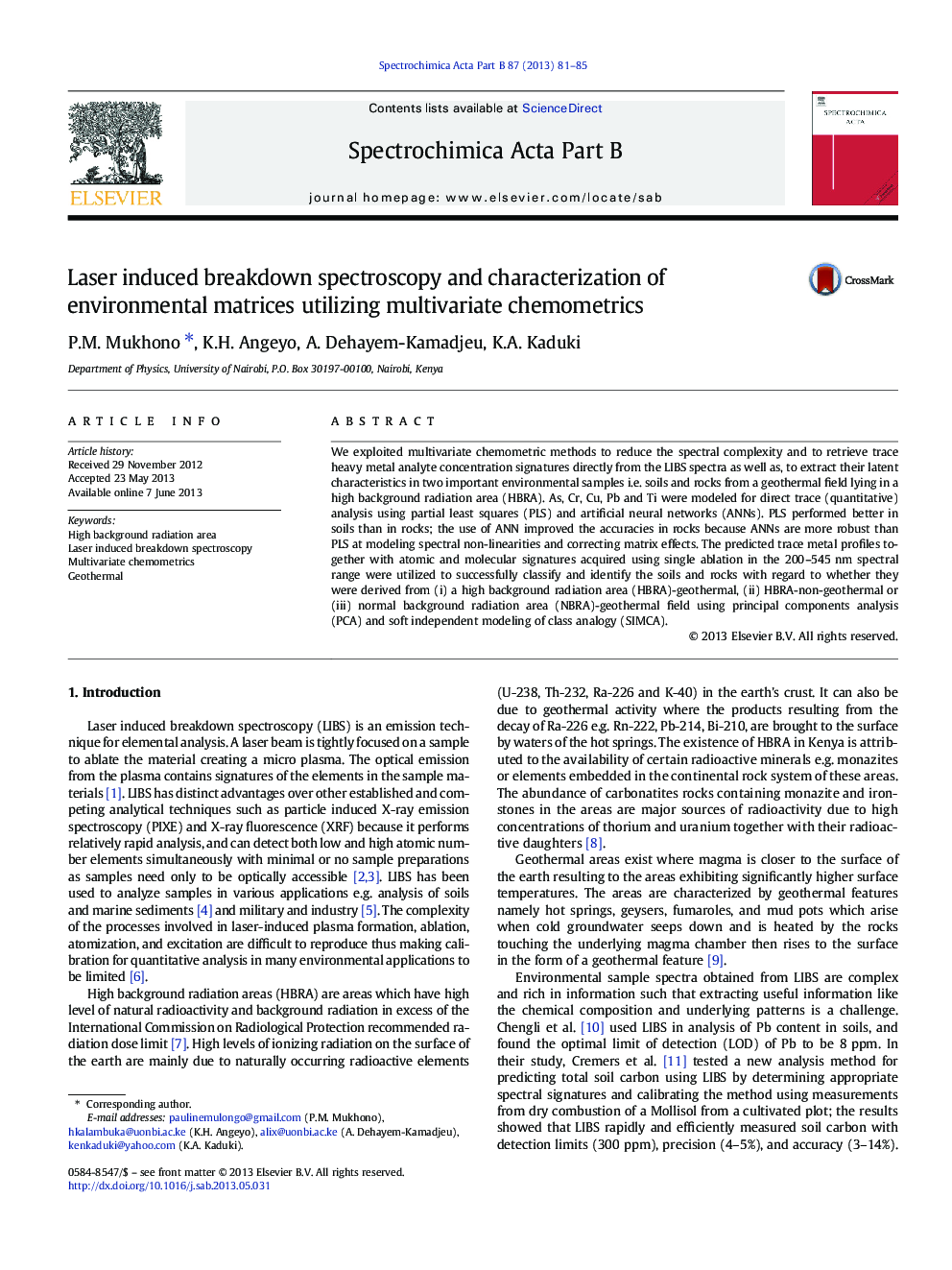| Article ID | Journal | Published Year | Pages | File Type |
|---|---|---|---|---|
| 1239914 | Spectrochimica Acta Part B: Atomic Spectroscopy | 2013 | 5 Pages |
•We sampled geothermal field soils and rocks from high background radiation areas.•We developed multivariate calibration and classification models for five trace elements.•The models were used to predict concentrations and identify geothermal field samples.•High background geothermally active areas have elevated levels of As and Pb.•The areas are classified according to the trace atomic signatures of Ca, Mg and Si.
We exploited multivariate chemometric methods to reduce the spectral complexity and to retrieve trace heavy metal analyte concentration signatures directly from the LIBS spectra as well as, to extract their latent characteristics in two important environmental samples i.e. soils and rocks from a geothermal field lying in a high background radiation area (HBRA). As, Cr, Cu, Pb and Ti were modeled for direct trace (quantitative) analysis using partial least squares (PLS) and artificial neural networks (ANNs). PLS performed better in soils than in rocks; the use of ANN improved the accuracies in rocks because ANNs are more robust than PLS at modeling spectral non-linearities and correcting matrix effects. The predicted trace metal profiles together with atomic and molecular signatures acquired using single ablation in the 200–545 nm spectral range were utilized to successfully classify and identify the soils and rocks with regard to whether they were derived from (i) a high background radiation area (HBRA)-geothermal, (ii) HBRA-non-geothermal or (iii) normal background radiation area (NBRA)-geothermal field using principal components analysis (PCA) and soft independent modeling of class analogy (SIMCA).
